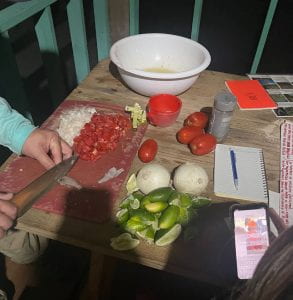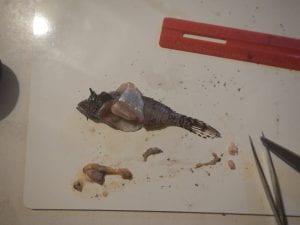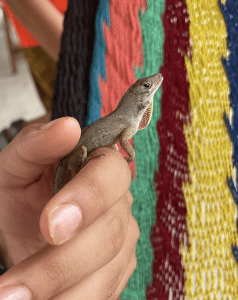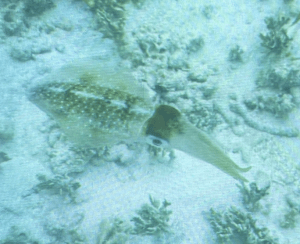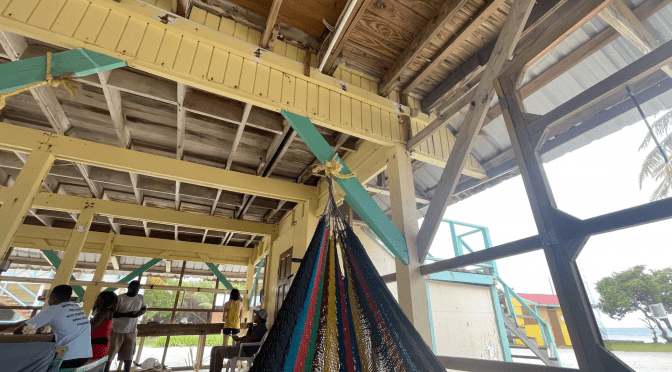Hi all, it’s Faith with Day 7 updates from the 2022 Belize trip!!!
Today we woke up and gathered our last non-mpa reef data. The waves were brutal; McKenna described them as, “being thrown in a washing machine.” The reef was about 5 feet deep, and it was mostly sand. The winds made this data collection positively horrendous! It was really hard to keep our quadrats in place, and the transect tape kept coming undone. I EVEN GOT FIRE CORALED (or “fire hydroided” since fire corals are actually hydroids). Nevertheless, we powered through.
The urchin collecting went surprisingly well. Today we collected 177 E. viridis (Reef boring urchins). per usual, we found them burrowed in tight niches of branched hard corals and under rocks. We found some exceptionally large ones today being 1.25 inches + !!! Even though there are always urchins we can’t grab, I usually notice more species variation on the reef. However, this patch reef only had E. viridis; there were no pencil slate urchins or boring urchins in sight!
Outside of the urchin hunt, we didn’t find any other echinoderms. I’ve really enjoyed being the urchin- identifier on the urchin counting team for the past few days. I realize I haven’t described it much, but that is because we usually only find Reef urchins and the occasional sea egg. Today, however, I got to throw the urchins back into the sea. They look like little soot sprites as they float to the bottom.
After the data dive, we went on a recreational snorkel. I was also fire coraled here, but I’ll forgive it. This reef had significantly less urchins than the non-mpa reef we had snorkeled earlier. The ones I saw were E. viridis and they were burrowed in coral crevices. Even though we didn’t do a formal collection, the reef had a visibly lower urchin count.
This reef also surprised us with 2 Caribbean reef squid (the only squid in the Caribbean), 2 spiny lobster, and a lionfish! (I found the lionfish btw)
Back on land, Caio showed me how to catch lizards so that I would be prepared for seeing them in Las Cuevas. (I think he likes me more now that he knows I’m the reptile taxon). According to the Caio technique, you have to cup the lizard with your hands when they can’t see you. Then, you let the front legs perch on two fingers while you press (lightly) on their torso with your thumb. I put a picture of me holding one below! The lizards we caught we brown anoles (A. sangrei), and they were climbing the trees behind the kitchen.
Later in the day, we analyzed our data about corals and urchins, answering the question, “how does the sea urchin population correlate with the live coral count, and how does this change across mpa and non-mpa reefs?” Our data was mostly inconclusive because of our improved ability to find sea urchins and environmental factors.
Last but not least, we dissected the 3 lionfish we hunted! Liliana got to dissect the big one; meanwhile, Maegan, Michiel, Ava, and I dissected “Snack,” the small 23.6g immature female. We didn’t get much data besides that, but she did eat a tiny fish in her limited years. Snack, Appetizer, and MC (main course) made a great ceviche. Also MC was a giant lionfish weighting 680g!
Anyways I’m about to enjoy some ceviche, till tomorrow!
QOTD: “Surchin af”
“BRB I’m gonna go rub this book on my head”

